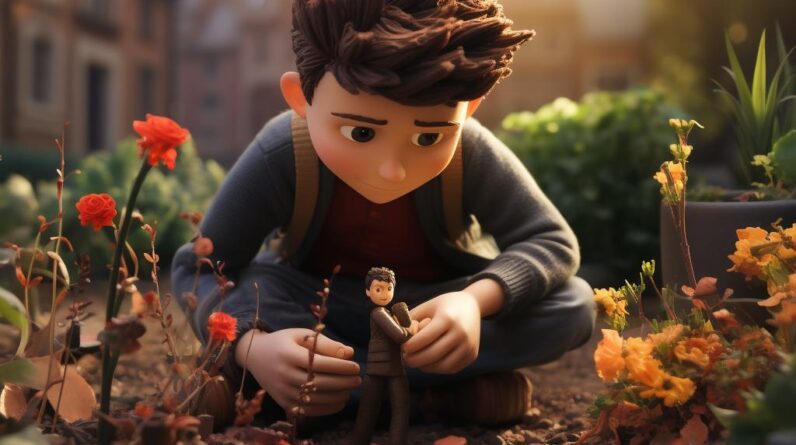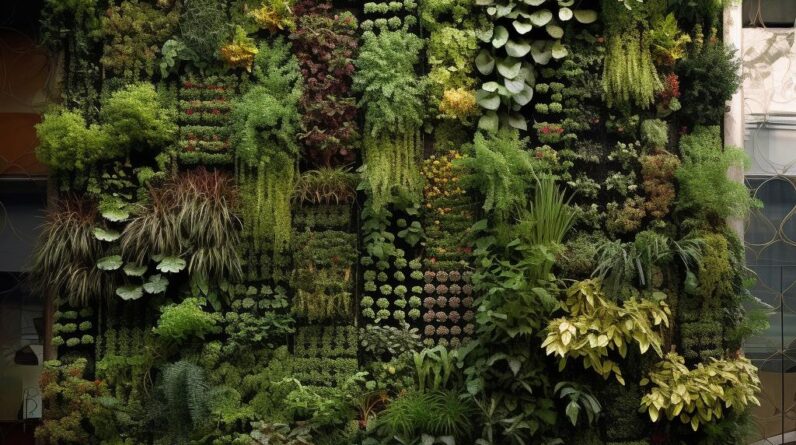Table of Contents
Introduction
In the heart of sprawling cities, where concrete seems to stretch endlessly, there lies a revolution – a green one. Over the past few decades, urban landscapes have seen a transformation unlike any other, wherein grey city structures gradually give way to lush pockets of green. This isn’t just about parks or public green spaces; it’s about individuals reclaiming their private spaces, no matter how compact, to incorporate nature into their daily lives. Welcome to the world of city oases.
The idea of an oasis has always been tied to a sanctuary – a place of calm and serenity amidst adversity. Urban environments, with their bustling streets and skyscraper shadows, aren’t typically associated with tranquility. However, as modern home design has evolved, so too has the desire and need for urban gardening. At the intersection of these two worlds lies an exciting new realm: the blend of home design and urban gardening.
These city oases aren’t just aesthetic respites. They reflect a profound understanding of the myriad benefits plants offer – from mental well-being to air purification. As cities have grown and space has become a premium, creative solutions have emerged, allowing even the smallest apartment balcony or windowsill to become a verdant retreat.
This article will delve into the rise of urban gardening, explore its influence on contemporary home design, and provide a glimpse into the future of these city sanctuaries. Whether you’re an avid gardener, a design enthusiast, or someone seeking a bit of green in your city life, journey with us through the transformative world of urban oases.
The Rise of Urban Gardening
The allure of a garden isn’t a new phenomenon; for centuries, gardens have been revered as places of relaxation, cultivation, and artistic expression. However, traditional gardens required expanses of land – a luxury scarcely available in modern urban settings. So how did urban gardening, with its distinct challenges, burgeon into a widespread movement?
Historical Perspective:
The origins of urban gardening can be traced back to moments in history when communities faced economic hardships or societal upheaval. World wars, for instance, saw the rise of “victory gardens,” where urban and suburban dwellers cultivated vegetables to combat food shortages. These gardens were more than just sources of sustenance; they symbolized resilience, unity, and the power of self-reliance. Over time, as cities expanded and green spaces dwindled, a renewed interest in urban cultivation emerged, not just for food but for the sheer joy of growing.
Mental, Physical, and Environmental Benefits:
Urban living, for all its conveniences, often comes with increased stress, noise pollution, and a disconnection from nature. Urban gardens emerged as an antidote. Mentally, they offer a therapeutic outlet, a space to disconnect and immerse oneself in the rhythms of nature. Physically, gardening promotes exercise, fresh air, and often, a bounty of home-grown produce. Environmentally, these green pockets help combat urban heat islands, improve air quality, and promote biodiversity, acting as sanctuaries for urban wildlife.
Case Studies:
Cities across the globe have recognized the value of green spaces and have, in many ways, spearheaded the urban gardening movement:
- New York City’s community gardens, especially in areas like the Lower East Side, have transformed vacant lots into vibrant communal spaces, fostering both biodiversity and community spirit.
- Tokyo, known for its high-density living, has embraced rooftop gardens, turning these spaces into productive and serene escapes high above the bustling streets.
- In Berlin, “Prinzessinnengärten” emerged as a mobile garden in a former wasteland, serving as a model for sustainable urban living and community building.
These examples highlight a clear trend: cities and their inhabitants are yearning for and creating connections to nature, even in the most concrete of jungles. As we’ll discover in the following sections, this movement has beautifully entwined itself with contemporary home design, turning personal spaces into verdant paradises.
Merging Home Design with Urban Gardening
The harmony of home design and urban gardening is like a symphony. As the notes of green intertwine with the chords of concrete and wood, it forms a melodious blend of nature and architecture. But how did the realms of urban gardening permeate so deeply into modern home design?
The Modern Homeowner:
With an increasing emphasis on well-being, today’s homeowner values more than just functional design. People want homes that reflect their lifestyles and values. For many, this means spaces that incorporate greenery, allowing for moments of respite and a connection to nature. Gone are the days when plants were merely decorative; now, they’re integral to the essence of the home.
Innovations in Design:
Designers and homeowners alike have tapped into their creative reservoirs to find inventive ways of integrating greenery into homes:
- Vertical Gardens: Making the most of wall spaces, vertical gardens not only serve as aesthetic features but also help purify the air and act as natural sound barriers.
- Balcony Gardens: For many urban dwellers, balconies are the only outdoor space available. Through thoughtful design, these have been transformed into mini-ecosystems, housing everything from herbs to compact fruit trees.
- Indoor Plant Aesthetics: With the surge in popularity of houseplants, interiors have evolved to accommodate them. From built-in plant shelves to botanical-themed decor, the indoors have truly gone green.
- Integrative Furniture: The market now boasts furniture designed specifically with plants in mind. Think chairs with planters, tables featuring central plant sections, and even beds surrounded by greenery.
The Role of Technology:
While the romance of soil and seed is timeless, technology has carved a niche for itself in the urban gardening sphere:
- Smart Watering Systems: Tailored to conserve water and provide plants with optimal hydration, these systems are a boon for those with busy lifestyles.
- Urban Gardening Apps: Whether you need reminders for plant care, advice on what plants to pick, or a platform to share your green successes, there’s likely an app for it.
- LED Grow Lights: Ensuring plants receive adequate light, especially in homes with limited natural sunlight, these lights have revolutionized indoor plant growth.
As the boundaries between the outdoors and indoors blur, homes are becoming holistic spaces that cater to both our human needs and our innate desire to connect with nature. This transformation is more than a trend—it’s a testament to the evolving definition of what it means to be “at home.”
Challenges and Solutions
Every revolution comes with its set of challenges, and the urban gardening movement is no exception. While the dream of having a verdant sanctuary within a city apartment is compelling, making it a reality requires navigating through several obstacles. But, as with all things in the gardening world, where there’s a will, there’s a way.
Space Constraints:
The quintessential challenge of city living is, without a doubt, limited space. How does one cultivate a garden in a 500-square-foot apartment?
- Solution: The key lies in optimizing vertical spaces. Wall-mounted planters, hanging pots, and tiered plant stands allow for lushness without consuming floor space. Additionally, selecting dwarf or compact varieties of plants can offer the satisfaction of growing without overwhelming small areas.
Light Limitations:
Not every urban dwelling is blessed with abundant sunlight, an essential component for most plants.
- Solution: Using reflective materials in the home can help amplify available light. Alternatively, LED grow lights, as mentioned earlier, offer an efficient and effective solution. Moreover, choosing plants specifically adapted to low light conditions, such as snake plants or pothos, can also mitigate this challenge.
Watering and Soil Considerations:
The indoor environment can be vastly different from the outdoors, affecting both moisture levels and soil health.
- Solution: Using pots with proper drainage can prevent overwatering, a common issue in indoor gardens. Employing a moisture meter can take the guesswork out of when to water. As for soil, specialized potting mixes tailored to specific plant types (e.g., cacti, succulents, or orchids) can optimize growth.
Policies and Permissions:
For renters, there might be restrictions imposed by landlords or housing associations that dictate what can and cannot be done, especially in shared spaces like balconies.
- Solution: Open communication is vital. Before embarking on any significant gardening project, it’s advisable to check any contracts or speak directly with landlords or property managers. Often, there’s room for negotiation, especially if the changes are reversible or improve the property’s aesthetics.
The road to creating a city oasis, though dotted with challenges, isn’t insurmountable. With creativity, research, and a touch of green determination, urban dwellers everywhere are proving that concrete jungles can, indeed, be transformed into pockets of botanical bliss.
Looking Ahead: The Future of the City Oasis
In the ever-evolving world of urban gardening and home design, the horizon promises innovation and a deeper intertwining of nature within our city dwellings. As our world becomes more urbanized, the importance of these oases will only amplify, and their design will reflect the needs and aspirations of future generations.
Predictions for Urban Gardening’s Influence on Home and Architectural Design:
- Biophilic Design Expansion: As an architectural approach that seeks to connect building occupants more closely to nature, biophilic design will likely become a standard. Future homes might incorporate natural lighting, airflow, and plant integration not just as an aesthetic choice, but as a core principle of design.
- Modular Gardening Systems: As apartments and homes become smarter, gardening systems will follow suit. Imagine modular systems that can be added or removed as per spatial needs, all integrated with automated watering, lighting, and nutrient delivery.
- Integration of Food Production: With sustainability at the forefront, homes may have designated areas or solutions for growing food. Vertical hydroponic systems or compact aeroponic units could become common fixtures, ensuring fresh produce year-round.
The Role of Sustainability:
- Rainwater Harvesting: As water scarcity becomes a growing concern, future urban gardens might utilize sophisticated rainwater harvesting systems, even on a small scale, to water plants efficiently.
- Pollution Control: Plants known for their air-purifying qualities may become mainstays in urban homes. Furthermore, green roofs and walls might be encouraged or even mandated by cities to reduce the urban heat island effect and combat air pollution.
- Composting Innovations: Urban dwellers will likely have access to innovative composting solutions tailored to compact living, turning kitchen waste into garden gold.
Emerging Trends:
- Digital Plant Care: As technology permeates all aspects of life, digital tools like augmented reality (AR) might guide plant care routines, diagnose plant illnesses, or even suggest optimal plant arrangements based on light and airflow.
- Community Collaborative Gardens: Beyond individual homes, shared community spaces might evolve into collaborative gardens. Here, apartment dwellers can collectively grow, share, and enjoy produce, fostering both community spirit and sustainable practices.
In conclusion, the city oasis of the future will be more than just a space of beauty. It will be a testament to human ingenuity, our bond with nature, and our collective commitment to a sustainable urban future. The seeds we sow today, both literally and metaphorically, will determine the landscape of tomorrow’s urban sanctuaries.


